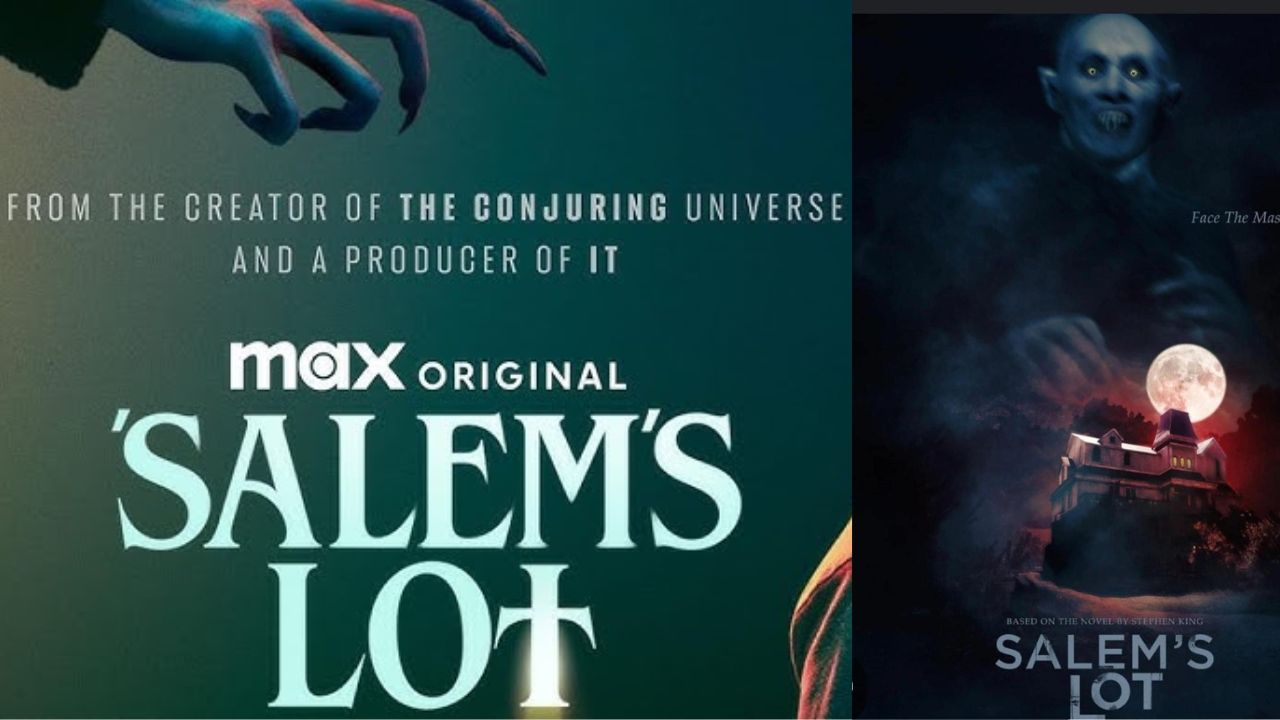Introduction: A Long-Awaited Revival of a Classic Vampire Tale
The 2024 adaptation of Stephen King’s Salem’s Lot marks a long-anticipated return to one of King’s most iconic novels. Directed by Gary Dauberman, the film brings a modern take on the 1975 story that has already been adapted twice into miniseries form. With a troubled production history and the shadow of its predecessors looming large, many horror fans wondered whether this iteration could successfully capture the eerie, slow-burn dread of the original story. Set in the year Salem’s Lot was first published, this film aims to take audiences back to a time when King first asked the haunting question: What if vampires invaded small-town America?
But can Dauberman’s Salem’s Lot breathe new life into an already well-trodden story, or is it just another hollow remake? Let’s dive deep into the plot, character portrayals, visual design, and thematic depth to discover the truth.
Plot Overview: The Return to Jerusalem’s Lot
At the heart of Salem’s Lot (2024) is Ben Mears (Lewis Pullman), a moderately successful author who returns to his childhood hometown of Jerusalem’s Lot seeking inspiration for his next book. His quiet hometown, however, is far from peaceful. Strange deaths, a creeping sense of dread, and a series of unexplained occurrences point to a malevolent force. Mears quickly realizes that the town is being preyed upon by a sinister vampire named Kurt Barlow (Alexander Ward), with the help of his human servant, Richard Straker (Pilou Asbæk).
As the townspeople succumb to the vampire plague, Ben teams up with an unlikely group of survivors, including his love interest Susan Norton (Makenzie Leigh), young Mark Petrie (Jordan Preston Carter), and the skeptical Dr. Cody (Alfre Woodard). Together, they attempt to uncover Barlow’s lair and stop the rising tide of vampirism before the entire town is turned.
While the basic premise mirrors King’s original novel, the pacing and execution feel rushed. In under two hours, the film races through key events that might have benefited from more careful buildup and atmospheric tension, leading to a sense of disjointedness in the narrative.
Character Development: A Mixed Bag of Performances
The casting for Salem’s Lot 2024 was ambitious, but the results were uneven. Lewis Pullman as Ben Mears delivers a decent performance, portraying a man torn between his personal demons and the terror overwhelming his hometown. However, his character lacks the depth and development that made King’s Ben so memorable. The rushed pacing of the film leaves little room for his emotional journey to breathe, diminishing the impact of his eventual heroism.
Makenzie Leigh’s Susan Norton feels similarly underdeveloped. Her relationship with Ben is introduced quickly and lacks the emotional weight necessary to make their connection feel authentic. In contrast, Jordan Preston Carter stands out as Mark Petrie, delivering a strong performance as a resourceful and determined young boy hell-bent on avenging his family.
Pilou Asbæk’s portrayal of Richard Straker adds a sinister yet flamboyant flair to the character, though his screen time is unfortunately brief. Alexander Ward’s Kurt Barlow channels a Nosferatu-like eeriness, but his portrayal lacks the cunning and menace that made the original Barlow so terrifying. The supporting cast, particularly Alfre Woodard as Dr. Cody and John Benjamin Hickey as Father Callahan, bring moments of gravitas to the film, but their roles, like others, feel underutilized.
Visuals and Cinematography: Old-School Aesthetics Meets Modern Horror
Visually, Salem’s Lot (2024) is a mixed success. The film captures a nostalgic 1970s aesthetic with retro costumes, classic cars, and a muted color palette, immersing the viewer in the time period. The production design, particularly the infamous Marsten House, is effectively creepy, looming over the town like a decaying monument to past horrors.
However, the film’s visual effects often fall flat, particularly in its portrayal of the vampires. While their glowing eyes and ability to materialize out of nowhere offer some eerie moments, the overall presentation lacks the polish that modern audiences have come to expect from big-budget horror films. Several scenes, such as the rooftop confrontations, feel awkwardly staged and fail to deliver the suspense or shock value that they promise.
One of the highlights of the film’s cinematography comes in the use of the drive-in movie theater as a key setting, where the interplay of light and shadow heightens the tension. Yet these moments are rare in a film that otherwise struggles to maintain its atmosphere.
Themes and Messages: A Story of Small-Town Vulnerability
At its core, Salem’s Lot is a story about the vulnerability of small communities to overwhelming evil. The novel drew sharp contrasts between the idyllic small-town American life and the insidious nature of the vampire threat, a theme that still resonates today. However, in the 2024 film, this theme feels somewhat diluted.
While the film nods to the paranoia and fear of isolation that defined the 1970s, it fails to effectively explore the deeper existential dread that made King’s novel so powerful. The loss of community, the erosion of trust, and the creeping sense that something malevolent could take over a familiar place are present but not fully realized. Instead, the film seems more interested in shock-value moments, like the sudden deaths of children, rather than the slow build of dread that characterized previous adaptations.
Comparison to Previous Adaptations: Falling Short of Expectations
In comparison to Tobe Hooper’s 1979 miniseries, which remains a cult classic, Dauberman’s Salem’s Lot feels underwhelming. Hooper’s version was successful in creating a slow-burning atmosphere of unease, building tension over its runtime, and developing its characters in ways that the 2024 version simply does not have the space to do.
The 2004 adaptation was another attempt at modernization but also struggled with pacing and character development. Unfortunately, Dauberman’s version doesn’t fare much better, despite its potential for a more streamlined, cinematic approach. The film’s attempts to modernize certain elements and diversify its cast are commendable, but it ultimately lacks the depth and cohesion necessary to stand out as a definitive version.
Conclusion: Is Salem’s Lot (2024) Worth Watching?
While Salem’s Lot (2024) has its moments of charm, particularly in its nostalgic visuals and a few standout performances, it ultimately falls short of expectations. The rushed pacing, uneven character development, and lack of atmospheric tension leave the film feeling like a missed opportunity to truly revive one of Stephen King’s most beloved works.
For die-hard King fans, the film might still be worth a watch for its nostalgic value, but casual viewers or those seeking a fresh take on vampire lore may find themselves underwhelmed. In an era where the vampire genre has evolved significantly, Salem’s Lot (2024) feels stuck in the past, unable to fully capitalize on its potential.
Final Verdict: Salem’s Lot (2024) is an interesting yet flawed entry in the vampire canon. While it offers flashes of brilliance, it never quite lives up to the chilling potential of its source material.
For fans of Stephen King and vampire lore, Salem’s Lot (2024) might offer enough nostalgia to justify a watch. However, if you’re looking for a more intense horror experience, consider checking out other King adaptations like Doctor Sleep or The Outsider. For more information on where to watch Salem’s Lot, visit our watch page and don’t forget to check out other highly rated horror films on GoMovies.





